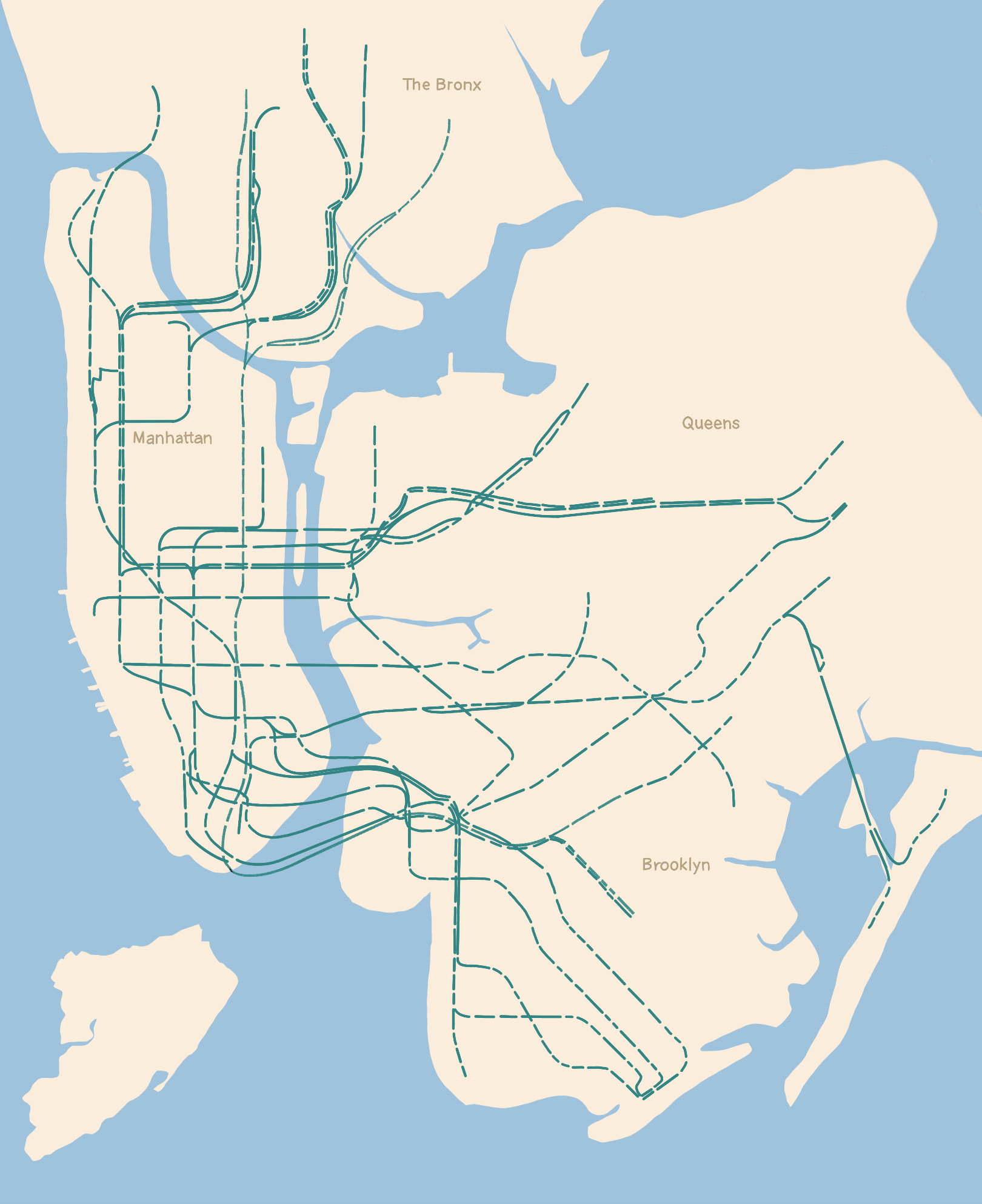Expanding the MTA to Underserved Outer Boroughs
Overview:
This project explores the potential of a new MTA train line that connects the outer boroughs of Queens, Brooklyn, and the Bronx directly, bypassing Manhattan. The goal is to address transit deserts in underserved areas, which are predominantly low-income communities of color, by providing better accessibility to jobs, essential services, and economic opportunities.
New York City’s current transit system heavily prioritizes routes that pass through Manhattan, leaving the outer boroughs with limited options and long commutes. This project challenges the status quo by proposing a solution to reduce inequality and enhance connectivity for communities often overlooked in urban planning.
Key Features:
Proposed Train Line: A continuous train line through Queens, Brooklyn, and the Bronx.
Impact Analysis: Reduces the need for Manhattan-bound transfers, slashes commute times, and improves access to resources for residents of transit deserts.
Reallocation of Funds: Advocates for prioritizing investments in outer-borough connectivity rather than Manhattan-centric projects like the Second Avenue Subway.
Community Engagement: The project includes a survey to gather public opinions on the importance of this initiative and highlights the voices of affected communities.
Objective:
To inspire the MTA and policymakers to consider equitable transportation planning that prioritizes people over profit, ensuring that underserved areas receive the investment and attention they deserve.
This piece maps the stark reality of New York City's unbalanced transit system, emphasizing the outer boroughs' lack of direct connectivity. The fragmented, dashed lines highlight areas where subway infrastructure is limited or nonexistent, isolating communities in Queens, Brooklyn, and the Bronx. While Manhattan is a dense web of transit access, the outer regions remain underserved, forcing residents into long, inefficient commutes.
By stripping the map down to essentials, this work lays bare the inequities of transit planning—revealing not just what exists, but what is missing. The absence of crucial links in these boroughs is more than an inconvenience; it’s a barrier to economic mobility and opportunity. This piece challenges viewers to rethink New York’s transit priorities, pushing for a system that serves the entire city, not just its core.
This piece presents an alternative future—one where New York City’s outer boroughs are no longer isolated by inadequate transit. The pink line represents a newly proposed train route, seamlessly linking underserved areas of the Bronx, Queens, and Brooklyn without requiring a detour through Manhattan. The integration of existing subway connections (indicated by major transfer points) highlights how this expansion would reduce travel time, enhance accessibility, and create more economic opportunities for communities in transit deserts.
By overlaying this proposed route onto the fragmented subway network, the work challenges viewers to reconsider the city’s transit priorities. It asks a critical question: What if we invested in connecting the boroughs instead of reinforcing Manhattan’s dominance?
This piece is a call to action for policymakers, urban planners, and everyday commuters to advocate for a fairer, more inclusive transit future.



